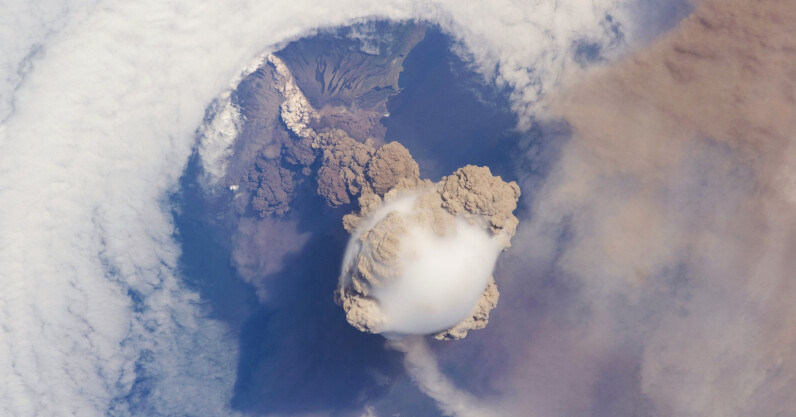Let’s face it — climate change is humanity’s greatest screw-up. We’ve known about it for almost a century. The science is clear. And yet, we’ve done nothing. It’s a fking embarrassment.
Now, finally, global leaders are scrambling to clean up the mess. But, even though most of the climate solutions we need already exist, we can’t seem to get our arses in gear to deploy them at the pace and scale required.
In short, the world is heating up, and we are failing to cool it down. Humans emitted more CO2 into the atmosphere last year than ever before (uh…WTF?).
Understandably, leaders are scared shitless. Which is pushing them to explore some pretty dumb, and outright dangerous, ideas. One of their worst brainwaves is geoengineering — AKA playing God with the Earth’s climate. (“Geoengineering” as used here does not refer to carbon removal technologies which are, to the best of our knowledge, pretty legit.)
Some of these proposals include brightening clouds, altering the ocean’s chemistry, or shooting particles into the atmosphere to dim the light of the sun — what could go wrong?
While these proposals might sound like something from a dystopian sci-fi flick, it’s actually remarkably easy, and cheap, to alter the Earth’s climate.
Solar geoengineering is one of the more controversial of these “solutions”. Its most popular derivative, stratospheric aerosol injection, involves shooting dust into the atmosphere to reduce the amount of sunlight hitting the Earth’s surface. The tech was inspired by volcanic clouds which have been known to cool the entire planet for years following a major eruption.

While stratospheric aerosol injection could be remarkably effective in halting global heating, it might open a Pandora’s box of problems. According to a recent UN report, interfering in the globe’s natural climate could damage the ozone layer, alter global rainfall patterns, and cause severe geopolitical tensions.
While proponents say solar geoengineering would be a short-term measure to combat warming, a recent study published in Scientific American suggests that if politicians do decide to shoot dust into the atmosphere they could become dangerously dependent on it for “centuries or more.”
To put enough dust in the atmosphere to curb warming could require tens of thousands of high-altitude flights per year. A sudden halt to this process could cause temperatures to skyrocket, potentially faster than life could adapt, a concept known as “termination shock.”
Then there’s the ethical issue that a techno-fix could take pressure off politicians and businesses to decarbonise as fast as possible.
Simply put, solar geoengineering could be the equivalent of a climate change band-aid.
Despite the risks, last year, the US government set up a five-year research programme exploring ways to reflect more sunlight back into space, setting the stage for further funding into the nascent technology.
Billionaires including Bill Gates, George Soros, and Facebook co-founder Dustin Moskovitz have all expressed their interest, while 60 prominent scientists want to conduct small-scale solar geoengineering field experiments.
There’s even a startup, Make Sunsets, that is preselling carbon credits based on its promise to release sulfur dioxide into the atmosphere to curb warming.

The precautionary principle — or “if in doubt, leave it out,” to ordinary folks — is one of the fundamental premises of sound environmental decision-making, and one that we ought to heed going forward.
In a potentially positive step, the EU announced this week a call for talks at the “highest international level” on the risks posed by the possible use of climate geoengineering.
“These technologies introduce new risks to people and ecosystems, while they could also increase power imbalances between nations, spark conflicts and raises a myriad of ethical, legal, governance and political issues,” said EU officials in a joint communication on Wednesday.
“We cannot solve our problems with the same thinking that created them.
While the EU is taking a precautionary approach, it is not outright against the technologies and seeks to create “rules” for governing them.
Others are taking a harder line.
In a statement issued last year, Frank Biermann from Utrecht University’s Copernicus Institute of Sustainable Development, warned that “the risks of solar geoengineering are poorly understood and can never be fully known.”
Biermann is the leader of a group of renowned climate scientists calling for a non-use agreement on solar geoengineering. In other words, a worldwide ban on its development.
“Research on solar geoengineering is not the preparation of a Plan B to prevent climate disaster, as its advocates argue. It will instead simply delay and derail current global climate policies,” he said.
“Moreover, the current system of international institutions is incapable of effectively regulating the deployment of this technology on a global scale. Solar geoengineering is no solution.”
I couldn’t agree more, professor. By playing God with the climate we not only risk worsening our predicament, but we also send a dangerous message — that humans can simply engineer their way out of their problems, rather than fix them at the root (think widespread cultural, social, and political transformation).
As Einstein famously quipped: “We cannot solve our problems with the same thinking that created them.”



